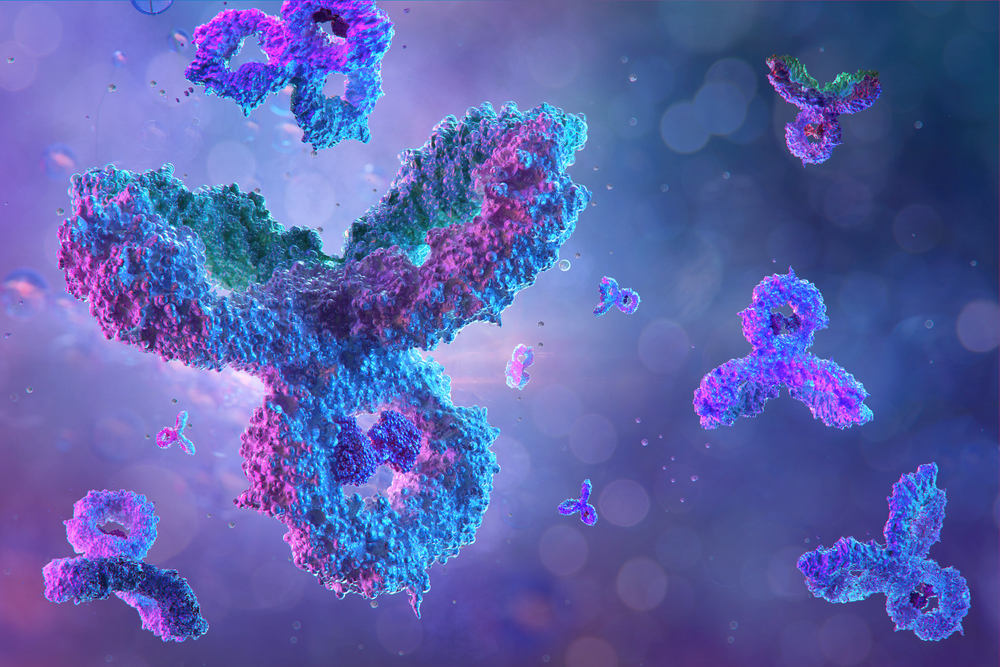
What is being tested?
This test measures the amount of antimitochondrial antibodies (AMA) in the blood. The production of AMA is strongly associated with primary biliary cirrhosis (PBC). PBC is an autoimmune disorder that causes inflammation and scarring of the bile ducts inside the liver. It is found most frequently in women between the ages of 35 and 60. PBC blocks the flow of bile and causes progressive liver damage. About 90% of those affected by PBC will have significant concentrations of antimitochondrial antibodies.
There are several types of AMA designated as M1, M2, M3, M5, and M6. The M2 type has been found to be the most strongly associated with PBC, while the others may also be found in other conditions. Some laboratories have started to offer both AMA-M2 and AMA tests, as well as other rarer antibodies associated with PBC.
How is it used?
The mitochondria antibody test (AMA test) is ordered to help diagnose primary biliary cirrhosis (PBC). It may be ordered by itself or along with other tests for autoantibodies such as antinuclear antibodies (ANA) and smooth muscle antibodies (SMA) to help detect PBC and distinguish it from other conditions that may be causing autoimmune-related liver damage. The AMA-M2 test is being offered by some laboratories as well as the AMA test.
When is it requested?
The AMA or AMA-M2 test is ordered when a doctor suspects that the patient has PBC. The patient may have symptoms such as an enlarged liver and spleen, fatigue, jaundice (yellowing of the skin and eyes), and itchiness, but many patients affected with early PBC do not have any symptoms. The condition is often initially identified because a patient has elevated liver enzymes (especially alkaline phosphatase (ALP)) that are found during routine blood tests.
AMA or AMA-M2 tests may be ordered along with or following a variety of tests that are used to help diagnose and/or rule out other causes of liver disease or injury. These causes can include infections (such as viral hepatitis), drugs, alcohol abuse, toxins, genetic conditions, metabolic conditions and autoimmune hepatitis.
What does the result mean?
When significant amounts of AMA or AMA-M2 are present in the blood, the most likely cause is PBC. Small concentrations of AMA may also be present in patients with chronic active hepatitis, autoimmune hepatitis, liver or bile obstruction, and with infections such as syphilis or acute infectious hepatitis. It may also be present in patients with other autoimmune disorders such as systemic lupus erythematosus, rheumatoid arthritis and thyroiditis. The AMA test is not used to diagnose these other conditions, but its presence does indicate some degree of autoimmune activity.
Around 10% of patients will have PBC even though they are negative for AMA.
Concentrations of AMA may be lower in children and in those with compromised immune systems.
Is there anything else I should know?
AMA and AMA-M2 are not diagnostic of PBC. When significant concentrations of AMA or AMA-M2 are present, and the doctor suspects PBC, a liver biopsy may be performed to look for characteristic signs of primary biliary cirrhosis in the liver tissue. Imaging scans of the liver may also be ordered to look for bile duct obstructions.
About 50% of the cases of PBC will be discovered before the patient has noticeable symptoms.
Common questions
The cause is currently not known. It is not infectious and not inherited, although an increased susceptibility to develop autoimmune disorders may occur in some families. It can occur in anyone at any age, but it is primarily seen in middle-aged women.
The course and severity of PBC is difficult to predict. Many patients will have no or few symptoms for many years. For more information, consult with your doctor and see the links in 'Related information'.
More information
What is Pathology Tests Explained?
Pathology Tests Explained (PTEx) is a not-for profit group managed by a consortium of Australasian medical and scientific organisations.
With up-to-date, evidence-based information about pathology tests it is a leading trusted source for consumers.
Information is prepared and reviewed by practising pathologists and scientists and is entirely free of any commercial influence.